Want to buy or sell something? Check the classifieds
-
The Fedora Lounge is supported in part by commission earning affiliate links sitewide. Please support us by using them. You may learn more here.
You are using an out of date browser. It may not display this or other websites correctly.
You should upgrade or use an alternative browser.
You should upgrade or use an alternative browser.
Stetson Vita-felt
- Thread starter fedoralover
- Start date
billyspew
One Too Many
- Messages
- 1,746
Beautiful, and guaranteed to be 40s (40-46).
Totally.
The sweatband looks thin anf pliable too as well, just like one of mine. The wafer edge brim is great, like another of mine!
SteveAS
Practically Family
- Messages
- 841
- Location
- San Francisco
Thanks for the compliments and the date confirmations, Lefty and Billy.
The sweat is indeed thin and pliable (and soft) . . . very nice.
The sweat is indeed thin and pliable (and soft) . . . very nice.
- Messages
- 15,129
- Location
- Buffalo, NY
Fantastic shape... Congratulations!
- Messages
- 15,319
- Location
- Somewhere south of crazy
That is one beauty of a hat Steve. Nice snag, congrats!
Joshbru3
I'll Lock Up
- Messages
- 4,409
- Location
- Chicago, IL
I just received this navy/burgundy Diplomat in superb condition. The colors of both the felt and the ribbon are richer than in the photos. The felt is nice, but it's neither particularly thin nor particularly easily molded. I'm thinking this hat is from the 1940s, but would welcome corrections.
Without flash:

WOW!!! That is such a beautiful hat! The shade of blue is spectacular and when mixed with that purple ribbon, its just awesome. I really like the edge treatment and the crown looks like it was formed with a very nice block. The hat looks to be in pristine condition. Great find, Steve! :eusa_clap:eusa_clap:eusa_clap:eusa_clap:eusa_clap:eusa_clap
SteveAS
Practically Family
- Messages
- 841
- Location
- San Francisco
Thanks, Perry and Josh, I was really happy to land it.
- Messages
- 15,129
- Location
- Buffalo, NY
RSD Vita-Felt Process
A soft fuzzy slippers kind of hat... very lightweight with the thin supple sweatband - feels very nice on.
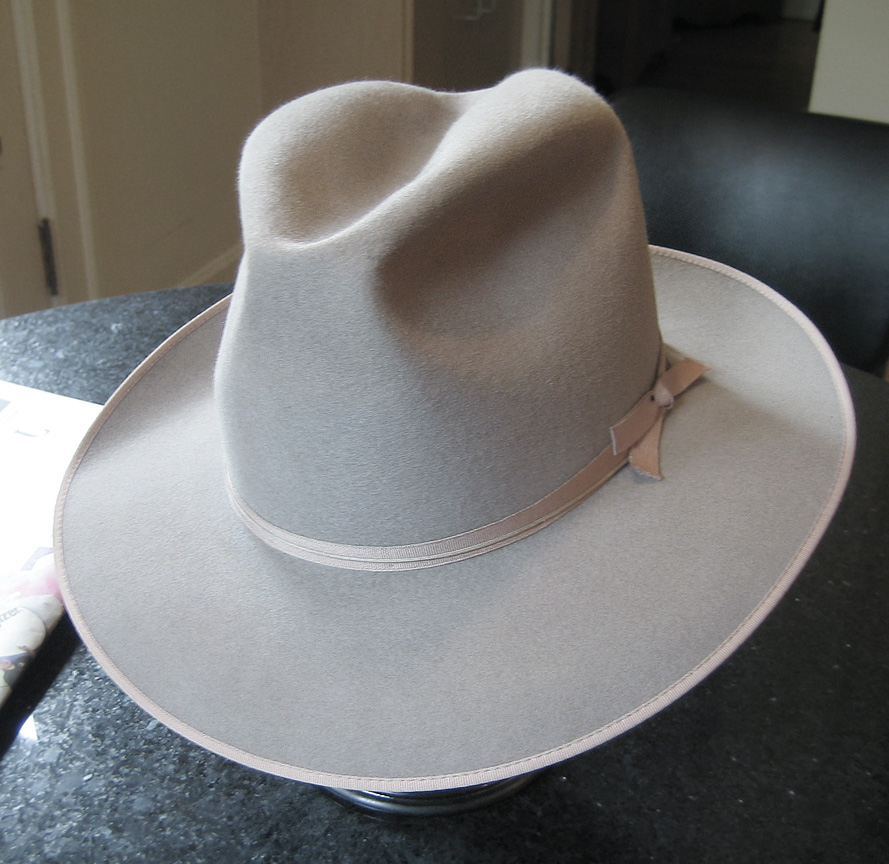
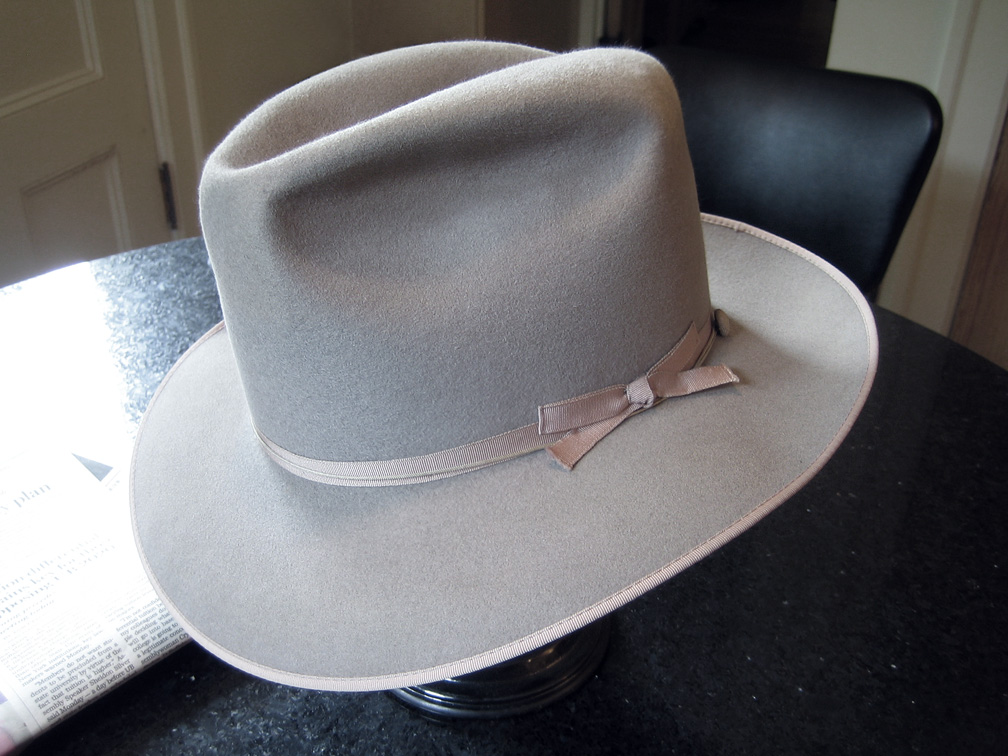
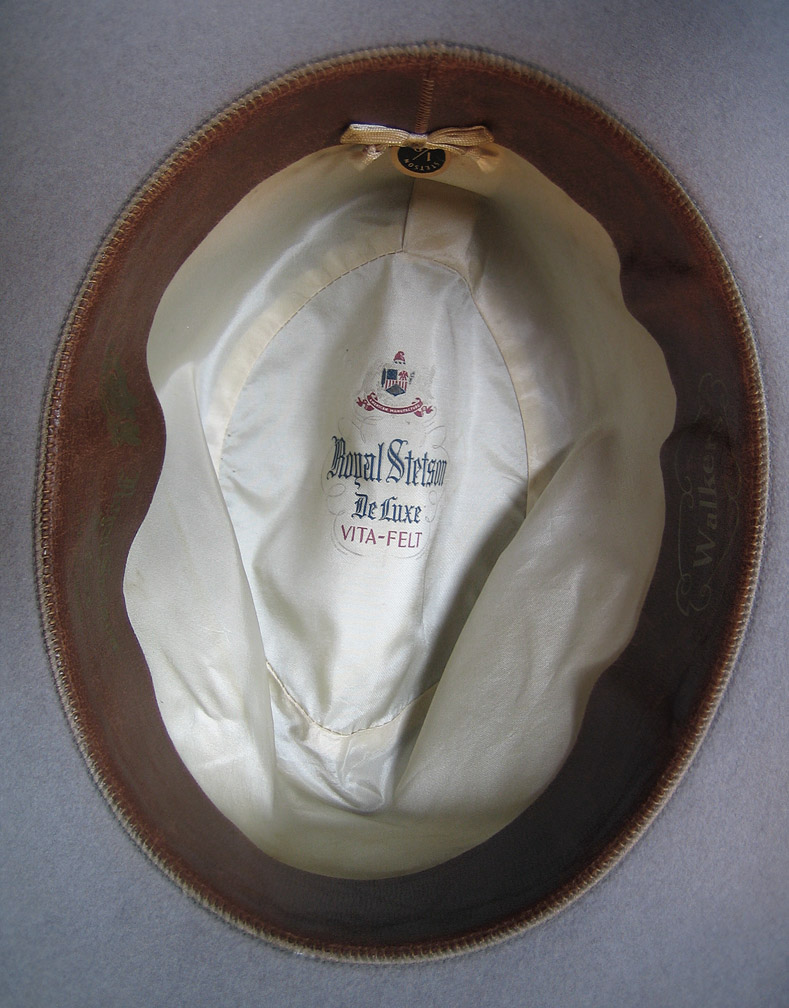
liner is non-shiny silk taffeta.
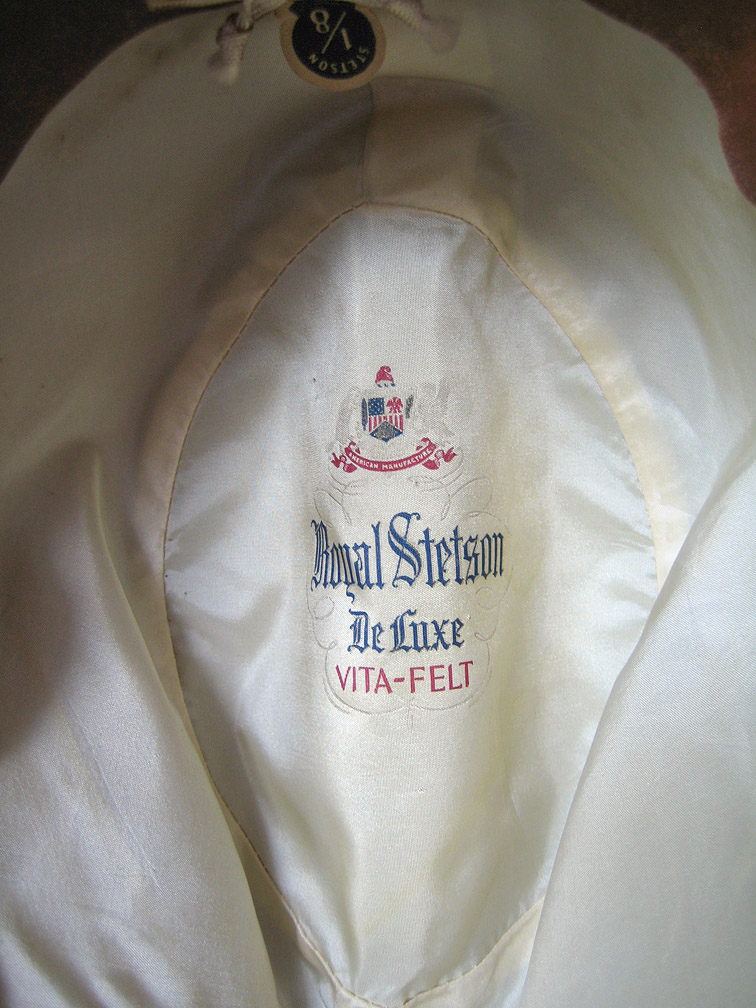
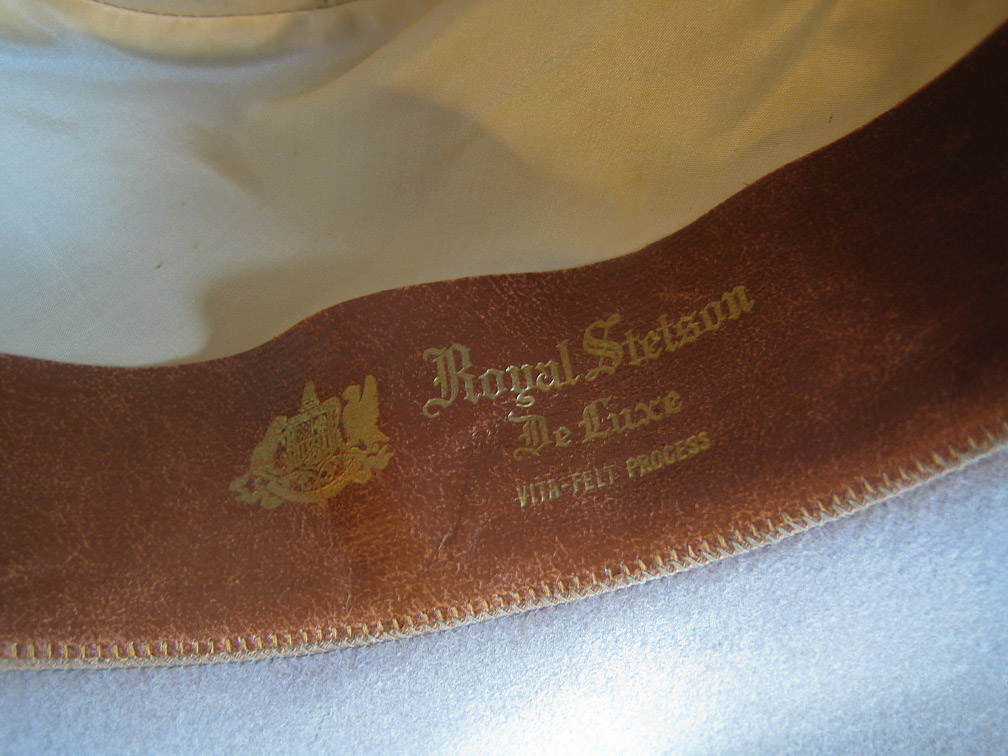
color is more accurate in the first pictures... warm gray with lavender undertones in the ribbon.

A soft fuzzy slippers kind of hat... very lightweight with the thin supple sweatband - feels very nice on.



liner is non-shiny silk taffeta.


color is more accurate in the first pictures... warm gray with lavender undertones in the ribbon.

Last edited:
Obsessively browsing Google's Advanced Patent Search, I came across this one from 1943. Here, Stetson is assigned the patent on a new process for manufacturing felt hats.

Vita-Felt, of course, was being used in commerce well before '43 (July 30, 1940), so it's important to note that this patent references a previous application by the assignee, made December 29, 1941. This is still nearly a year and a half after the first appearance of Vita-Felt, and I have been unable to find this application, which might also reference previous applications and/or patents.

The aspect of the patent that provides a possible connection with Vita-Felt is the specific language used as to other "objects and advantages" of the process being patented. As has been noted in this thread, Vita-Felt was introduced as a response to the shortage of imported hats, primarily Bosalinos, caused by the War. Much of the Vita-Felt advertising makes a point of the springy felt with a resilient, come-back texture. Compare these advertised claims with the language of the benefits conferred upon hats manufactured using the process described in the patent:

Discussing this matter with JtL, he hit upon the issue of price. Vita-Felt was not introduced at a cheaper price-point. Instead, it was at $10 - more expensive than many other Stetson offerings. Yet, one of the chief benefits of the process in the patent is to conserve material (fur) by changing the order and manner of manufacturing processes.
I believe that the the price just goes with the cost of "new" and "springy" felt. Just because Stetson was going to save money by this new process, didn't mean that the consumer got to do the same. As with many products that are "new", "revolutionary", and the like, the consumer pays a premium to obtain the new, hip, and current goods. Plus, while I haven't looked at Borso prices at the time and even if Vita-Felts were a few dollars more, someone who wanted that Borso feel, and thought Vita-Felt might fit the bill, may have been willing to pay a small premium. Finally, the Hatters' Highlights [Stetson's internal newsletter] I've got say that Stetson was still turning pretty great profits during the War, likely by saving on production costs without decreasing their prices.
This isn't a decisive statement that the patent posted is the Vita-Felt process, but it is a patent describing a new process for felt manufacture that would achieve the very benefits for which Vita-Felt was touted. Having searched high and low for any connection between Casein or Aralac (or the several names under which it was marketed) and Stetson, I have found none, other than the case cited above. Every other connection between a milk based felt-filler and hats is a connection with the names under the Hat Corporation of America. Among these competing theories, I believe it to be far more likely that Vita-Felt is the result of a new process of manufacture covered by this patent, a process which certainly may have been employed well after the logo for Vita-Felt disappeared from hats, as a standard method of production.
Just thought I'd throw this Stetson patent into the mix. It was filed Sept 4, 1942 and was for improvements in preparing fur for felting. The patent number is 2374936. Link > http://www.google.com/patents?id=Uz1EAAAAEBAJ&printsec=abstract&source=gbs_overview_r&cad=0#v=onepage&q&f=false
B
carouselvic
I'll Lock Up
- Messages
- 5,085
- Location
- Kansas
Early Vita-Felt
Stetson's try for a Borsalino substitute...
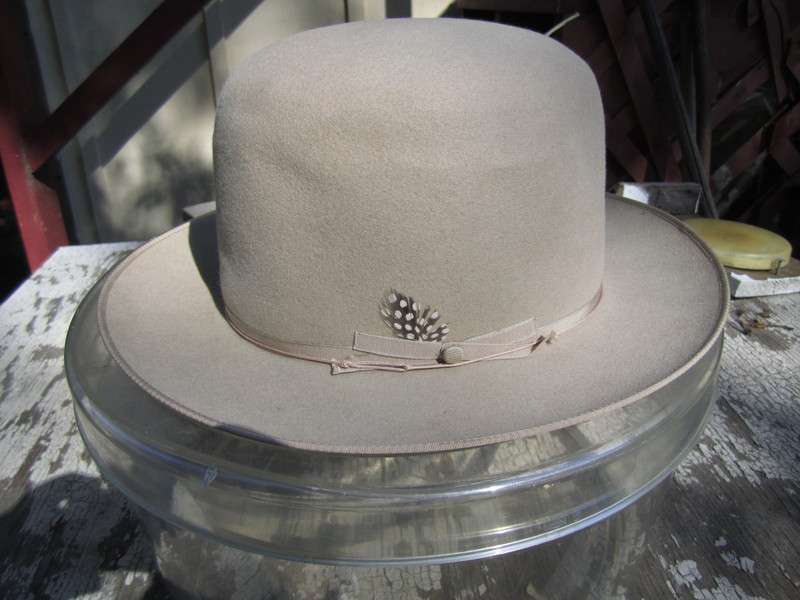
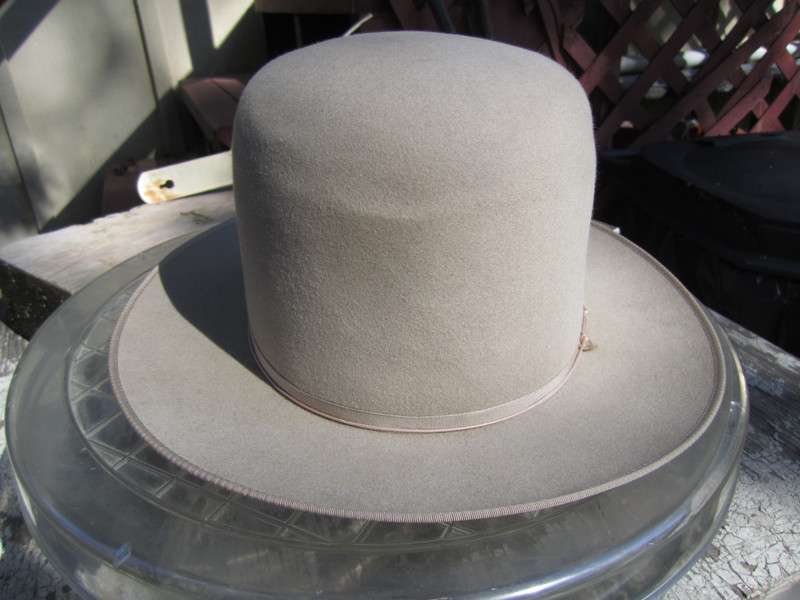
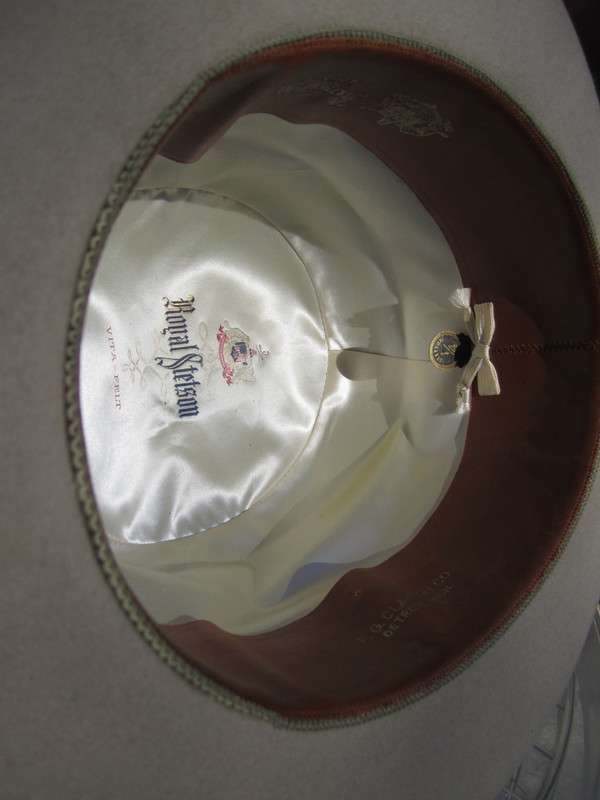
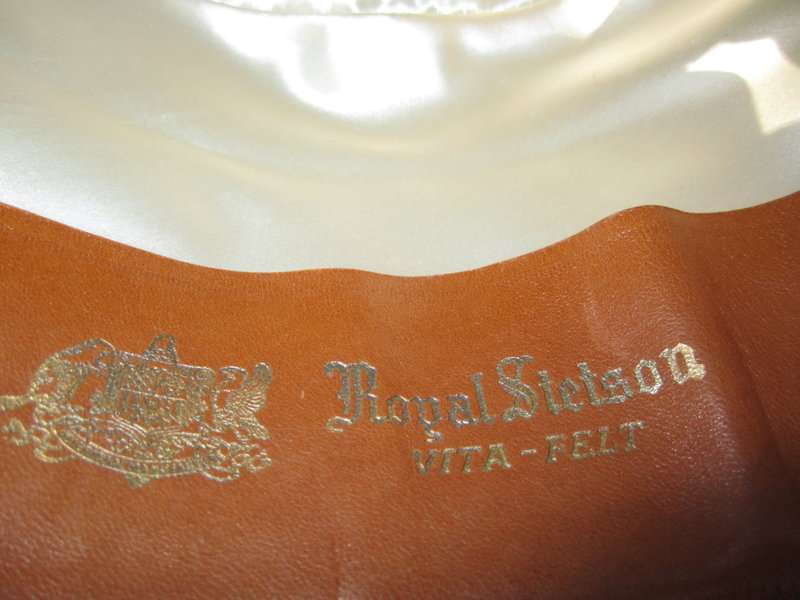
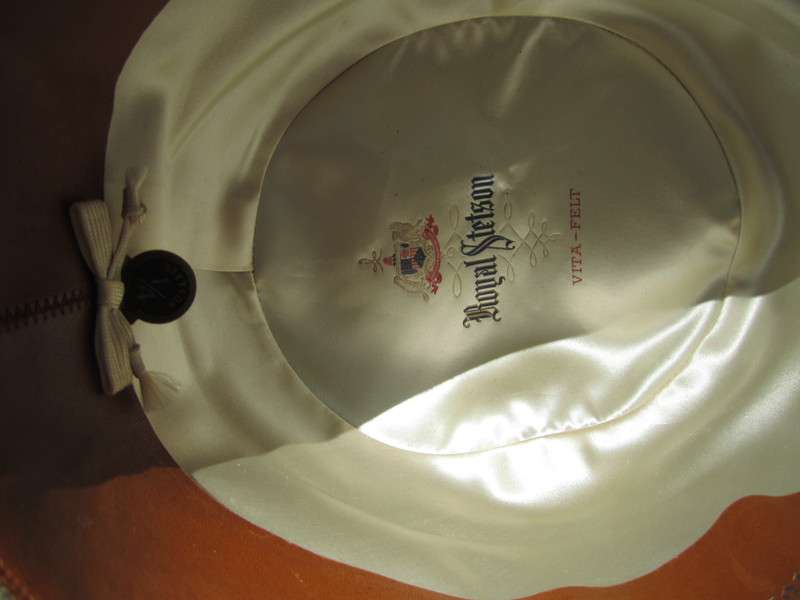
Sweatband is 2 1/8" wide and corrugated. Button on wind cord is fixed to the ribbon. Old style size tag(gold ink).
Stetson's try for a Borsalino substitute...





Sweatband is 2 1/8" wide and corrugated. Button on wind cord is fixed to the ribbon. Old style size tag(gold ink).
- Messages
- 15,129
- Location
- Buffalo, NY
Very cool. The only fixed button wind cords I've seen are 1940 at the oldest. Is that a corrugated sweat in front?
Very cool. The only fixed button wind cords I've seen are 1940 at the oldest. Is that a corrugated sweat in front?
...and the rest of the sweatband looks like it's equipped with a cloth reed, doesn't it?
- Messages
- 15,129
- Location
- Buffalo, NY
...and the rest of the sweatband looks like it's equipped with a cloth reed, doesn't it?
Yes... same as the example at the top of this page... somewhat later than Vics.
Featured products
-
 John Lofgren Monkey Boots Shinki Horsebuttt - $1,136 The classic monkey boot silhouette in an incredibly rich Shinki russet horse leather.
John Lofgren Monkey Boots Shinki Horsebuttt - $1,136 The classic monkey boot silhouette in an incredibly rich Shinki russet horse leather. -
 Grant Stone Diesel Boot Dark Olive Chromexcel - $395 Goodyear welted, Horween Chromexcel, classic good looks.
Grant Stone Diesel Boot Dark Olive Chromexcel - $395 Goodyear welted, Horween Chromexcel, classic good looks. -
 Schott 568 Vandals Jacket - $1,250 The classic Perfecto motorcycle jacket, in a very special limited-edition Schott double rider style.
Schott 568 Vandals Jacket - $1,250 The classic Perfecto motorcycle jacket, in a very special limited-edition Schott double rider style.
Mark B.
One of the Regulars
- Messages
- 125
- Location
- Tampa, Florida
Is Vita Felt still a fur felt hat or something else, or both?
randooch
I'll Lock Up
- Messages
- 4,869
- Location
- Ukiah, California
Start reading at page 4 of this very thread, and your question will be answered.Is Vita Felt still a fur felt hat or something else, or both?
Mark B.
One of the Regulars
- Messages
- 125
- Location
- Tampa, Florida
Thanks Randall...........will do.
Mark B.
One of the Regulars
- Messages
- 125
- Location
- Tampa, Florida
What is Vita Felt?
Well Randall I read all post from page 4 and it is all clear as mud now.......:dizzy: Thanks for clearing that one up......
Well Randall I read all post from page 4 and it is all clear as mud now.......:dizzy: Thanks for clearing that one up......
Start reading at page 4 of this very thread, and your question will be answered.
Mark B.
One of the Regulars
- Messages
- 125
- Location
- Tampa, Florida
I need a beer..........good night all.............
rlk
I'll Lock Up
- Messages
- 6,100
- Location
- Evanston, IL
June 1945 ad


Last edited:
Similar threads
- Replies
- 0
- Views
- 1K
Members online
- Mr.Sterling
- OldManFung
- The Shoe
- Tyler Durden
- codex
- Mulceber
- JohanA2
- jimboyogi
- hunnyboop
- twistdh
- 01flhr
- DMJason
- canvas
- SR James
- ScareYourPassenger
- Aloysius
- JackBroChill
- barthestole
- bluesforchallah
- JonS1967
- RedBird
- Leigh H
- Breath
- EP71
- Bruno
- BarryMcCockiner_PhD
- gily
- Olumin
- gwhtfrd
- twentyfiveshells
- X83
- dangibbons1981
- hatsRme
- Dortreo
- clr09
- Berto
- gobibear
- bbarkley
- Rodzki
- bunty1
- Boomerang
- ParkerFM
- Simonoggio
- Doc Smith
- Yango
- dinhnguyen57
- Herrvallmo
- torfjord
- joezam713
- Khilij
Total: 2,985 (members: 76, guests: 2,909)

